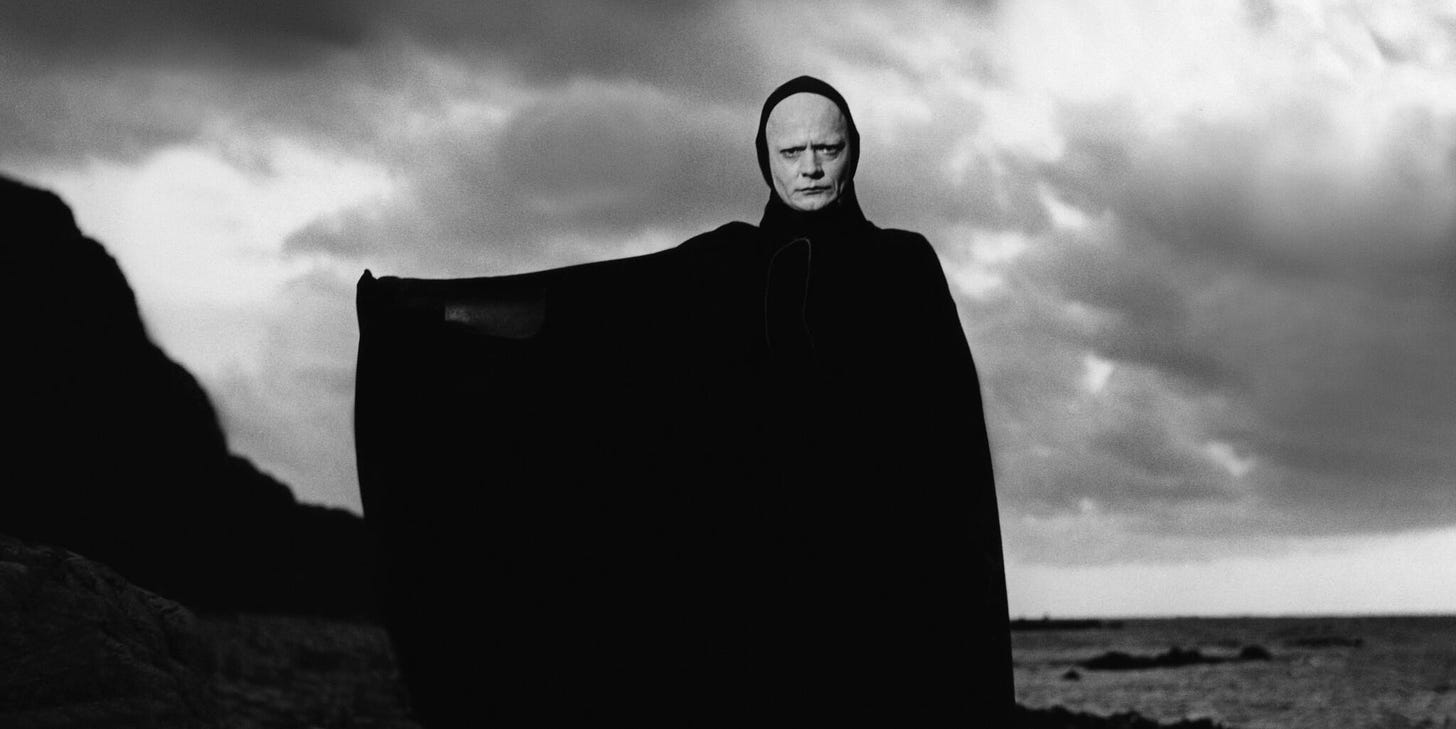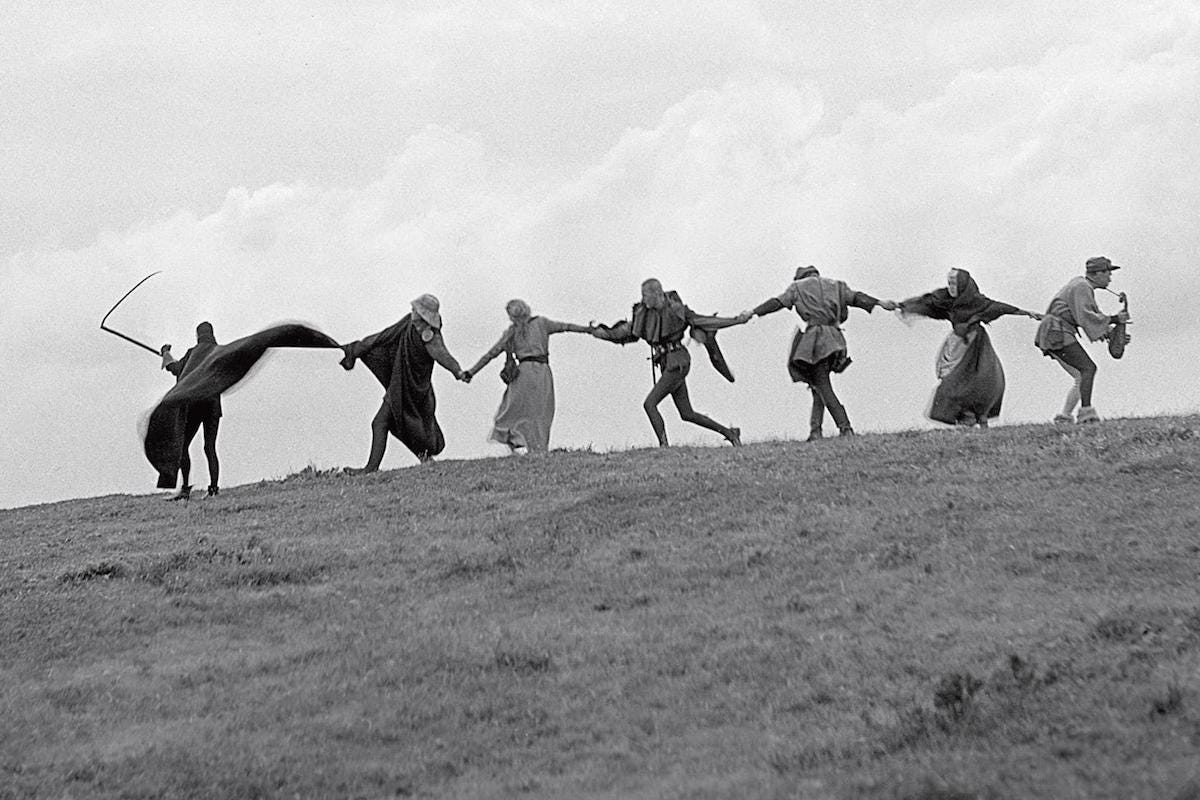I admit that this will open me up to accusations of ‘midwittery’, but my second favourite film of all-time is Ingmar Bergman’s 1957 classic “The Seventh Seal”.1
So ubiquitous has this movie become (and so archetypal are its characters) that lauding it is like praising a glass of water for being so refreshing on a very hot summer’s day. Yet I keep coming back to it time and time again because of the many, many things that make it so repeatedly watchable and constantly enjoyable. From the stark black and white cinematography, to its gallows humour and witty dialogue, but also because of its overarching themes of good and evil, light and dark, faith and reason, cynicism and redemption. It is simply a perfect movie.
No character in The Seventh Seal is more archetypal than that of the character known as “Death”. Adorned in a full-length black cloak, with a face powder-white, Death was the constant companion for Antonius Block the Knight, Jöns the Squire, the acting troupe and their baby, Plog the Blacksmith, and the rest, as they sought respite from the Black Death that stalked the land.
Antonius Block, freshly returned from the catastrophic Crusades in the Holy Land, holds both a running dialogue and a chess match with Death, the purpose being to buy himself some more time among the living. Unfortunately for Block, “Death waits for no one”. Death did not wait for Block, he was merely enjoying the chess match while it lasted.
So many scenes from this movie have become part of our modern culture through parody, spoof, or even homage. One such scene is the very last one, the one known as “The Dance of Death”. In this scene, we see Death leading the group to its mortal end, as he carries a scythe in hand. Death and The Scythe are fused together in our collective minds.
The mere image of Bergman’s Death is frightening enough, but it’s in the scenes where he is equipped with his scythe that the immediacy of his threat, which doubles as his raison d’etre, is plain for all to see. Bergman’s Death is fatalistic in its inevitability, although he himself often veered towards Existentialism, a philosophy that rejects the concept of fate altogether.
Bergman’s Death is above all, brutally honest. Death promises you nothing but death. There is no sugar coating what he intends to do to you. There is no trickery, no false promises, nothing but The End. Death will arrive and swing his scythe, sparing no one. To be fair, such blunt honesty is admirable….at least I think it is.
The United States Under Secretary of State for Political Affairs, and until this past week the Acting Deputy Secretary of State, Victoria Nuland promised “freedom and democracy” in place of death, and brought cookies instead of a scythe. Despite these differences, the end result from her efforts was always the same: death.
Almost three weeks ago, I wrote a satirical essay on the death of Russian politician and western asset Alexei Navalny. The piece was intended to be funny because Navalny was a very silly man, and he deserved no better. You can read it here if you haven’t done so already:
Victoria Nuland is the total opposite of Saint Alexei, Patron Saint of Russia and Liberal Democracy, in that she is a very, very serious woman. She deserves to be treated with the utmost seriousness, as the amount of damage and carnage that have resulted from her life’s efforts have been enormous. One can satirize Vicki, but that would be too nice to her. Her butcher’s bill is far too large for a cheeky retrospective to do it justice.
If asked to summarize Vicki in one sentence, I would reply with: “Vicki Nuland spent her professional career in the service of US Empire, with a specific focus on a Trotskyite jihad against Russia.” I will explain this shortly, but let me just say that what Rome represents for the Islamic jihadi, Moscow does for our Vicki. Before we delve into the my arguments, let’s take a look at her career up until now.





